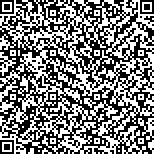| 引用本文: | 黄劲,王洁,高霄,雷依丽,杨光红,冯永红,秦莲花.结核分枝杆菌Rv1385的抗原表位预测分析[J].生物信息学,2019,17(3):161-166. |
| HUANG Jin,WANG Jie,GAO Xiao,LEI Yili,YANG Guanghong,FENG Yonghong,QIN Lianhua.Prediction and analysis of the distribution of epitopes of Rv1385 from Mycobacterium tuberculosis[J].Chinese Journal of Bioinformatics,2019,17(3):161-166. |
|
| |
|
|
| 本文已被:浏览 2469次 下载 1599次 |

码上扫一扫! |
|
|
| 结核分枝杆菌Rv1385的抗原表位预测分析 |
|
黄劲1,2, 王洁3, 高霄2, 雷依丽2, 杨光红4, 冯永红3, 秦莲花3
|
|
(1.贵州医科大学 环境污染与疾病监控教育部重点实验室,贵阳 550025;2. 贵州医科大学 基础医学院, 贵阳 550025;3.同济大学 医学院附属上海市肺科医院 上海市结核病重点实验室,上海 200433;4. 贵州医科大学 公共卫生学院, 贵阳 550025)
|
|
| 摘要: |
| 结核分枝杆菌生长缓慢,难以获得足量的天然蛋白抗原。而利用基因工程技术制备重组蛋白抗原,存在着表达量低、不易纯化,以及特异性较低等不利因素。随着生物信息技术的发展,研究者可根据生物信息学软件预测,选择合成优势抗原肽段,而不需克隆整个蛋白,具有简便、经济、特异性高等特点。因此,本研究应用生物信息学方法,预测结核分枝杆菌Rv1385蛋白的抗原表位并分析其优势表位,对了解Rv1385蛋白的免疫学特性及其与结核分枝杆菌致病的关系具有重要意义。首先,从NCBI数据库下载Rv1385的氨基酸序列,然后采用生物信息学软件PSIPRED Server预测蛋白质二级结构;BepiPred 1.0 Server和ABCpred预测该蛋白的B细胞抗原表位;BIMAS、SYFPEITHI及NetCTLpan 1.1 Server预测该蛋白的CTL表位;SYFPEITHI和NetMHCIIpan 3.2 Server预测该蛋白的Th细胞表位。最后综合分析预测结核分枝杆菌Rv1385的优势候选抗原表位。结果显示,Rv1385蛋白二级结构中,α螺旋占51.8%,β折叠占41.6%,无规卷曲占6.6%;共有4个B细胞抗原位点,位于109~124、152~169、178~192、198~209氨基酸区段;3个CTL表位,位于263~271、87~95、240~248氨基酸区段;5个Th表位,位于77~91、87~101、234~247、70~84、46~60氨基酸区段。生物信息学分析显示Rv1385含有潜在的B细胞和T细胞抗原表位,为该蛋白抗原表位的进一步研究及应用奠定了基础。 |
| 关键词: 结核分枝杆菌 生物信息学 Rv1385 抗原性 |
| DOI:10.12113/j.issn.1672-5565.201812003 |
| 分类号:R378.91+1 |
| 文献标识码:A |
| 基金项目:国家自然科学基金(No.8147009, No.81771692, No.81471563);贵州省科技厅基金(黔科合[2010]3154号 );贵州省教育厅开放课题基金(黔教合KY字[2018]482). |
|
| Prediction and analysis of the distribution of epitopes of Rv1385 from Mycobacterium tuberculosis |
|
HUANG Jin1,2, WANG Jie3, GAO Xiao2, LEI Yili2, YANG Guanghong4, FENG Yonghong3, QIN Lianhua3
|
|
(1. Key Laboratory of Environmental Pollution Monitoring and Disease Control of Ministry of Education, Guizhou Medical University, Guiyang 550025, China; 2. School of Basic Medical Sciences, Guizhou Medical University, Guiyang 550025, China; 3. Shanghai Key Laboratory of Tuberculosis, Shanghai Pulmonary Hospital, Tongji University School of Medicine, Shanghai 200433, China; 4. School of Public Health, Guizhou Medical University, Guiyang 550025, China)
|
| Abstract: |
| Mycobacterium tuberculosis(M. tuberculosis) grows very slowly, thus it is difficult to obtain sufficient amount of natural protein antigen. However, the preparation of recombinant protein antigen by genetic engineering technology has some disadvantages, such as low expression, difficulty in purification, and low specificity. With the development of bioinformatics, instead of cloning the whole protein, researchers can select dominant antigen peptides according to the prediction of bioinformatics software, which has the characteristics of simplicity, economy, and specificity. Therefore, this study adopts bioinformatics methods to predict the antigenic epitopes of Rv1385 in M. tuberculosisand analyzes its dominant epitopes, which is of great significance for understanding the immunological properties of Rv1385 and its relationship with the pathogenesis of M. tuberculosis. First, the amino acid sequence of Rv1385 was downloaded from NCBI database, and then the secondary structure of the protein was predicted by bioinformatics software PSIPRED Server. The B cell epitopes were predicted by BepiPred 1.0 Server and ABCpred, the CTL epitopes were predicted by BIMAS, SYFPEITHI, and NetCTLpan 1.1 Server, and the Th cell epitopes were predicted by SYFPEITHI and NetMHCIIpan 3.2 Server. Finally, the candidate epitopes of Rv1385 were analyzed and predicted. Results showed that in the secondary structure of Rv1385, α-helix, β-sheet, and random coil accounted for 51.8%, 41.6%, and 6.6%, respectively. There were four B cell antigen sites, located in 109-4,2-9,8-192, and 198-209 amino acid regions, three CTL epitopes, located in 263-1,7-95, and 240-248 amino acid regions, and five Th epitopes, located in 77-1,7-1,4-7,0-84, and 46-60 amino acid regions. Bioinformatics analysis showed that Rv1385 contained potential B cell and T cell epitopes, which laid a foundation for the further research and application of the epitopes of Rv1385. |
| Key words: Mycobacterium tuberculosis Bioinformatics Rv1385 Antigenic epitope |
|
|
|
|






